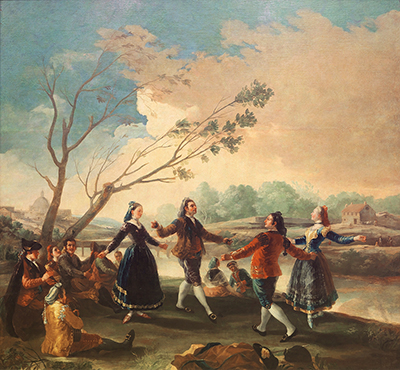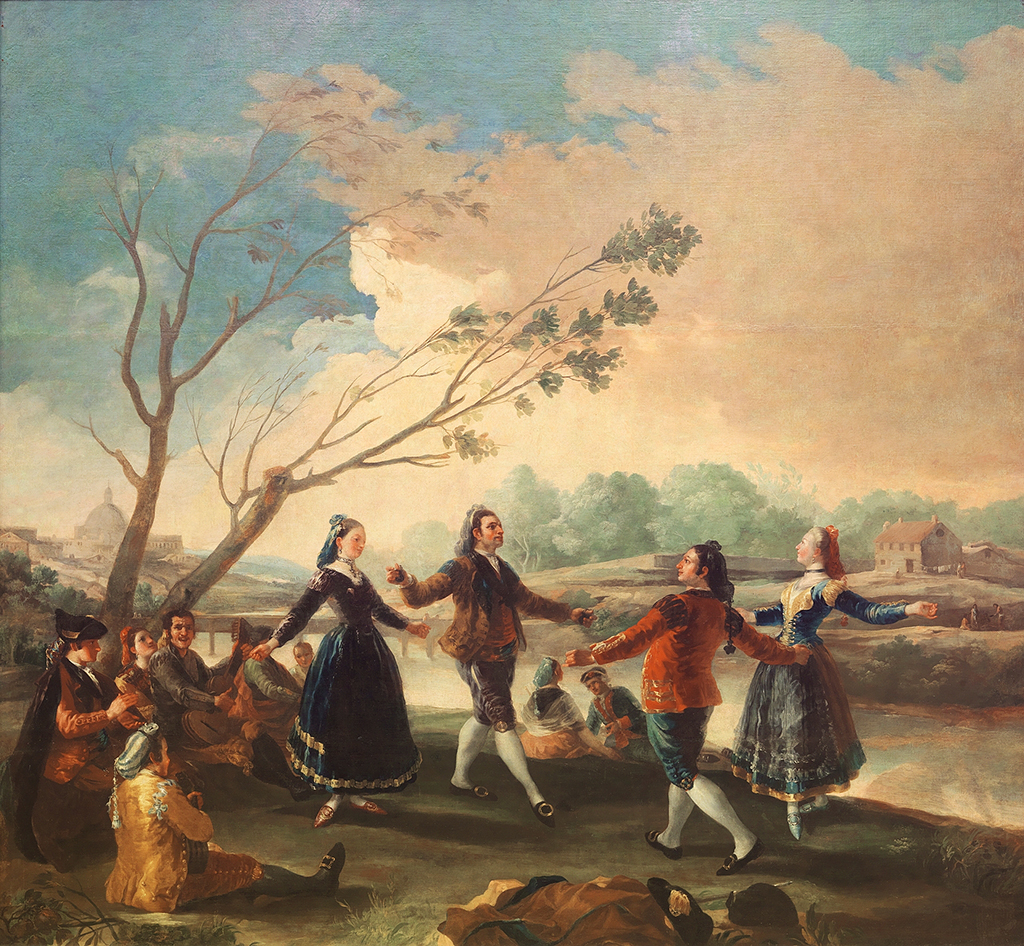Several works done by Goya and his contemporaries were pivotal in elaborating visual models that correspond to enlightening ideals. The engravings and paintings, however, were not for the common human beings. They were aimed at fulfilling the expectations of the modern middle-class art enthusiasts.
The oil painting, Cartoon (working drawing), is a representation of the famous dancing Seguidillas scene of Majos and Majas along the banks of Manzanares River in Madrid. In the background, Goya decided to paint the area around the Pontones Bridge that is not far away from La Quinta del Sordo, which happens to be the house and land he purchased in 1819. The consequent tapestry was aimed towards hanging in the feasting area of Princess of Asturias and the Prince. The two were to become the future Carlos IV alongside Maria Luisa de Parma (wife) at El Escorial Monastery. Dance on the Banks of the Manzanares was part of an ornamental series. The series was made of ten cartoons for tapestries, mainly on subjects that focus on the "countryside."
The particular assemblage of the current one was an invention of Goya himself. In 1870, this piece of work became part of the Prado Museum Collection. This was successful through Madrid's Royal Palace. Francisco de Goya's skills as a tapestry enabled him to exclude unnecessary data. Weavers probably couldn't easily execute the same information as Goya did. His more straightforward style influenced his direction of work. Goya expertly brings out different themes in his cartoons. The everyday life theme is as a result of the customs then that popularized aristocracy life. Respectful ladies could mingle discreetly with those considered to be of lower-class. The noble ladies could go as far as attending their dances and fiestas.
As a result of this, subjects from ordinary people's life were given priority instead of mythological and military themes whose main role was to decorate palace walls during the Baroque and Renaissance. Surprisingly, the scene brings realism with which its painting is all about. Widely, the themes address landscape in art, dancers, dance, Romanticism in art, leisure, tapestry cartoons, Spanish-18th century, Spain—customs and social life, painting, among others. The tone of colours, perspective, contrast, and depth is far better and all this effectively comes to existence through the use of oil and canvas materials.





